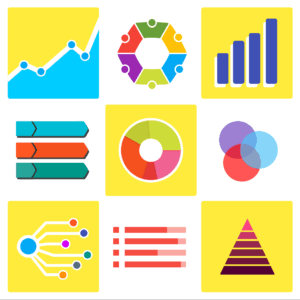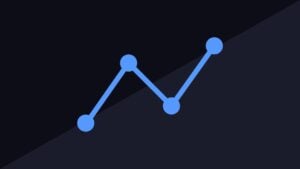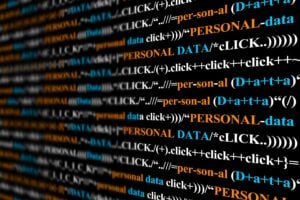Setting Data Foundations
When a company is truly data-driven, that can bring some advantages to the data practitioner. Working for a company where you do not need to convince executives that data is important can be beneficial, if that’s the case.
June Dershewitz, Co-Founder, InvestInData, notes, “Making decisions using data is a core expectation of business leaders. In companies where the C-suite already understands the value of data, their data teams have an advantage. Because if you don’t have that, you’re going to have to reserve some portion of your available time to do that convincing work, educating and convincing people to fund data initiatives or to care about making data driven decisions in the first place. That’s an opportunity cost for the things that you can be actually doing with data.”
When business leaders already understand that data is important, if your company is already invested, then the groundwork has been laid out. That’s not to say it’s easy to focus on data, the customer and adding value.
Dershewitz adds, “It sets a precedent for expected behavior. If you’re pitching a new idea and you want it to be funded, it better have data-driven anecdotes in it. If you are launching a new product, you better make sure that you know how you’re going to evaluate its effectiveness quantitatively when it launches. When you’re launching a new marketing campaign, of course you are going to AB test it. When you are working in a place where it’s the expectation that everyone is going to be using data to do their jobs, it means that there are lots of good examples all around you of people who are doing that. That makes a flywheel where you can’t get away with just making decisions based on your gut when everyone around you is doing it very successfully while incorporating data.”
AI might be a tool that can bring someone ahead of the pack—but is it there just yet? Or is it negatively impacting the discipline?
“I won’t say that AI has changed the game, but I think right now, there’s just a lot of people exploring ideas, and there’s a lot of dialogue,” she says. “But I’m still waiting for good, concrete, impactful case studies of something that has changed specific to data science and analytics, specifically because of generative AI. It’s not quite there yet. Data professionals are technical in a slightly different way than software engineers are technical. But we look at that field and think what are the tasks that data professionals are going to see disappear? We can really look to software engineers for some of the things that have already impacted them.”
So what’s up for debate? AI looms over the question and answer but is there more to it for the data science community? For Dershewitz, you have to go back to foundational business knowledge: “My unpopular opinion: I think that there are a lot of business fundamentals that have not changed because of generative AI. A lot of people were kind of distracted by the shiny new object. You still spend your day making sure that you have a solid grasp on the fundamentals that are expected of you as a data leader. Those have not changed.”
Dershewitz adds, “When considering new business strategies, it doesn’t necessarily have to be a technically complex product that a company is producing and delivering to its customers. That is the thing that’s going to allow them to reap a bunch of value from it. It could be something that is so simple that it could have been conceived of and delivered ten years ago. Maybe it’s a little more efficient now, but we should not shy away from simple things that we could do that would deliver value to our customers, not necessarily just those things that make use of complex new technology.”
The Great (Data) Debate
While Dershewitz focuses on the basic foundation of the data scientist, Michael Bagalman, Vice President, Business Intelligence and Data Science, STARZ, looks at a specific aspect of what makes him ahead of the pack: the composition of the team. Or in his words, human resources.
“Insights isn’t a one-person Broadway show. I don’t chase the mythical does-it-all candidate: Insights needs a cast of characters, not a solo performance,” says Bagalman. “Your Excel wizard doesn’t need to be your storyteller. Your data digger doesn’t need to be your strategist. Your visualization virtuoso doesn’t need to be your statistician.”
He adds, “Build a team of curious misfits who actually care. Mix your philosophy major with your physics dropout. Blend your reformed accountant with your recovering consultant. Stop looking for Superman and start building the Justice League. Hire for curiosity, train for skills, and maybe you’ll build an insights team.”
In a similar vein, Bagalman looks at AI more through a human lens. It’s not about replacing insights teams. However, it is about the quality of your data that you feed the machine.
Bagalman notes, “Fancy AI models are only as good as your business knowledge. Feed garbage questions, get garbage insights wrapped in prettier prose. AI hasn’t changed the game, but has changed the playing field, the pace, and added a robot to the coaching staff. The fundamentals still matter: asking smart questions, understanding context, and knowing when the data is lying to you. Before AI, insights strategy was like fishing with a net. AI hands you a sonar-guided harpoon. Home in faster for fewer wasted hours.”
As for what’s currently up for debate in data science, Bagalman lays out several pertinent issues. “Insights strategy used to be about finding answers. Now it’s about asking the right questions,” he says. Other issues on Bagalman’s debate list:
- Accuracy vs. Speed: Do you want the fastest insight or the right one? Real-time analysis is great… until it’s real-time wrong.
- AI Transparency: Trusting AI models is like trusting a magician. Black-box models deliver insights, but can you explain them?
- Data Privacy: Harvesting data like a squirrel before winter? Check those privacy laws before you turn insights into liabilities.
- Bias Amplification: AI doesn’t remove bias; it supercharges it. Garbage assumptions in equals problematic insights out.
- Signal vs. Noise: More data equals more noise. Find the signals that matter or drown in charts no one cares about.
Exploring the Capability with Purpose
For Arvind Balasundaram, Executive Director, Commercial Insights & Analytics, Regeneron Pharmaceuticals, there’s much to explore amid the changing data landscape. Yet, when it comes to data science, analytics and AI, Balasundaram sees valuable opportunities but to approach with caution.
“Don’t explore capability to just explore the capability,” says Balasundaram. “You must have a strong rationale and objective way of measuring business impact when implementing data science and AI.”
He continues, “Seek the sweet spot when implementing initiatives—aim for the intersection of desirability (does the solution fill a business need), feasibility (is it feasible to build the analytics/AI solution given time and budget constraints, and technical/organizational capabilities) and viability (can deployment deliver sustained business impact in a cost-effective way). Finally, what are the limits to scaling from a pilot implementation?”
As for what brings him ahead of the pack, Balasundaram notes several advantages that bring value to the data science, analytics and AI role in today’s environment:
- Continuous learning on capability evolution.
- Ability to simplify complexity and effectively storytell.
- Being persuasive in enrolling stakeholders, especially when results might be counterintuitive to expectation.
- Ability to drive looking through the windshield (analytics, predictive analytics) instead of the rear-view mirror (overreliance on reporting).
“Yes, AI has changed things,” relates Balasundaram. “Now we can handle much more volume of data than before because of AI. We can handle unstructured and structured data as inputs because of AI’s ability to handle multimodality. We can separate explanation and prediction in analytics. Finally, in generative AI, text-based querying has made the consumption of analytics a much more immersive experience for the stakeholder.”
He adds, “This means that curation, integration and storytelling will become very important in the future analytics universe. Also, the quality of insight will trump the quantity of insight, which is a profound difference. Most decision-making will evolve into an augmented decision rather than a purely human decision—this will accelerate with the adoption of AI agents.”
Video courtesy of The Data Chief/ThoughtSpot
Contributor
-

Matthew Kramer is the Digital Editor for All Things Insights & All Things Innovation. He has over 20 years of experience working in publishing and media companies, on a variety of business-to-business publications, websites and trade shows.
View all posts







































































































































































